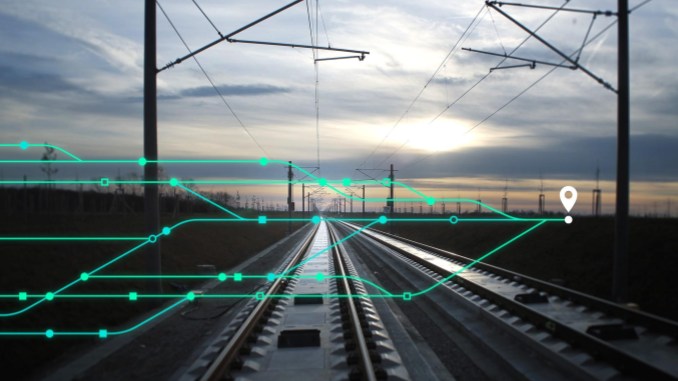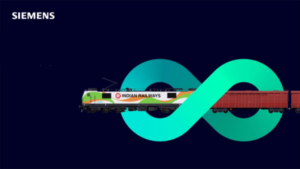
New generation of digital technologies and services are enabling faster, safer and cost-efficient movement of people and goods across the country
India, the world’s fastest growing big economy, is a nation on the move. One of its key imperatives to ensure sustainable growth is to raise the productivity and efficiency of the country’s transportation system. The role of railways is integral to the fulfilment of this vision. More than eight billion passengers travel by trains every year and the 21,000+ trains constitute one of the world’s largest transport and logistics network. The railways transport 1400 metric tonnes of freight annually, accounting for 27% of the freight movement in the country. Catering to urban mobility, over 850 km of metro lines are operational across India, and another ~1500km of metro lines are in varying stages of implementation.
The 400,000-strong rolling stock assets across locomotives, wagons and passenger coaches constitute India’s formidable railway system that serves as the backbone of the nation’s economy. The country’s railway network is expanding by the day and the distance traversed by Indian Railways is set to grow 400% by 2030. While the passenger travel in India is likely to grow from the current 1,098 billion km/day to 5,765 billion km/day, the country’s freight output is tipped to grow from 692 billion net tonne kilometres to 6,559 billion NTKM by 2030. Modernising and upgrading the country’s railway infrastructure is at the core of India’s developmental vision.
Digital thrust
Simultaneous with the continuous upgradation and refurbishment of the rolling stock, is a concerted effort to deploy new technologies to usher in a new era of mobility. A systemic renewal would translate into enhanced speed for passenger and freight trains, augmented safety, optimisation of freight timetables and an improved operation ratio. The transformation in mobility is being driven through technology, with digitalization enabling the railways to increase throughput, reduce energy costs and increase value sustainably over the entire lifecycle. Facilitating the transformation, technology majors are leveraging their expertise and know-how in automation, digitalization and intelligent electrification to provide smart mobility solutions.

With digitalisation, the country’s mobility players are enabling operators to make intelligent trains and infrastructure, increase value sustainably over the entire lifecycle, enhance passenger experience, and guarantee availability. Digital technologies are emerging as key drivers in the creation of intelligent, state-of-art infrastructure. Be it deploying AI to help the Indian Railways optimize its coach loads and train routing, or using thermal sensors, humidity sensors and GPS for location tracking of wagons and air-conditioned coaches, digital tools are already making their presence felt. The digital solutions for infrastructure ensure safe, reliable and efficient operations through automation of signalling and electrification systems.
A key enabler
While digitalisation is emerging as a key enabler across the spectrum for railways, its transformative impact is being witnessed in four keys areas: optimising of lifecycle costs with digital train solutions, ensuring 100% system availability, maximising network capacity and optimising customer experience and processes. The digital train solutions, that can be customised as well as fully-integrated, enable simplified fleet management, improved passenger experience, reduced life-cycle costs as well as better security and sustainability. Run on the open Train IT platform, the solution integrates data from multiple sources in real time to constantly improve functionalities.

Even as proactive monitoring and management of rail assets through AI-enabled intelligent operations ensures 100% system availability, digitalisation and rail automation can also help maximise throughput for mainline and mass transit. Taking advantage of the latest developments in Automatic Train Operation and Communications-based Train Control, digitalisation can yield notable savings in terms of operation costs and energy consumption. Moreover, centralisation of vital rail applications using virtualised, IoT-connected components enables a single data centre to control the entire rail network. Digital initiatives like train and capacity management, Mobility as a Service (MaaS), smart inventory, reservation and ticketing software can deliver enhanced customer experiences, as well as seamless operator processes.
The way forward
Digitalisation is key to developing and maintaining intelligent future-ready rail assets and services, enabling maximum process efficiency and up to 30% more profitability. These efficient technologies and solutions for passenger and freight transportation cover the entire gamut of rail infrastructure and metro-rail solutions. Industry leaders like Siemens, powered by the constant innovation of portfolio in core areas of rolling stock, rail automation and electrification, turnkey systems as well as related services, are leading the transformation.
Railways is the harbinger of technology as well as economic and environmental vitality. Digitalisation is the key to intelligent rail assets and services – with the potential to achieve maximum process efficiency and up to 30% more profitability. Siemens is leading this transformation with its new open digital business platform Siemens Xcelerator. By connecting different participants of the mobility eco-system such as trains, infrastructure, operators and passengers, Siemens Xcelerator will help deliver added value across each stakeholder’s core processes.
 Author:
Author:
Mr. Gunjan Vakharia,
Head of Mobility Business,
Siemens Limited

